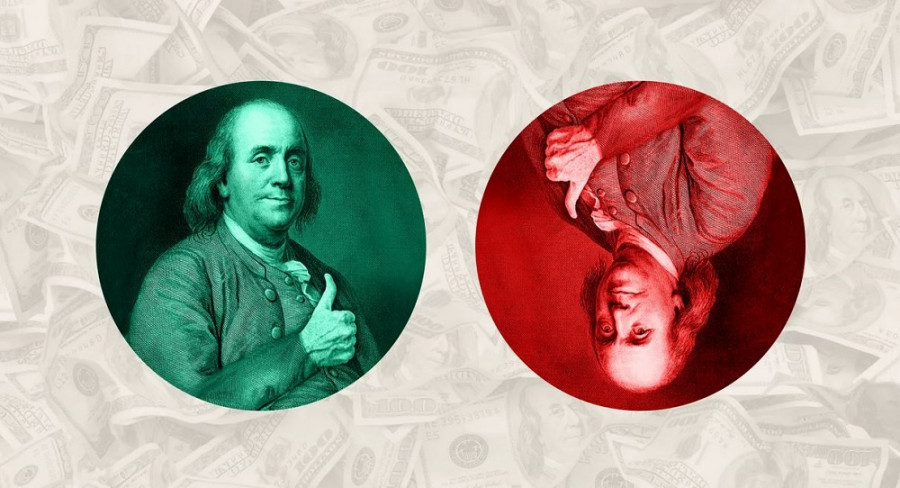The EUR/USD pair is going ahead with its climb despite the disappointing ZEW indices released today in Germany. The ZEW report was a failure across the board, with all components in the red zone. However, EUR/USD traders neglected the report, and the instrument updated a 1.5-week high today, approaching the 1.11 level. This movement is driven by the overall weakness of the greenback and the hawkish rhetoric from ECB policymakers. Interestingly, market participants even overlooked the recent assassination attempt on Donald Trump, which occurred two days ago. Traders are focusing on traditional fundamental factors that, for now, are in favor of EUR/USD buyers.

Let's start with the aforementioned ZEW indices. According to the report, Germany's business sentiment index slumped to 3.6 points in September, against a forecast of 17.1. The index has been declining for the past three months, with the September result being the lowest since October 2023, when the index was in negative territory. The Eurozone-wide business sentiment index also dropped sharply, from 16.3 to 9.3 points, the lowest since October of last year. A similar downward trend is observed here, with the index falling for the third consecutive month.
Despite such disappointing figures, EUR/USD traders continue to push the pair higher, though with less enthusiasm than on Monday. The instrument received support from ECB representatives, who delivered hawkish signals. For instance, Peter Kazimir, the Slovak National Bank Governor and an ECB Governing Council member, stated that significant changes in forecasts would be needed for the ECB to cut interest rates in October. He added that the next rate cut would likely not occur before December. A similar stance was voiced by Gediminas Simkus, the Bank of Lithuania Governor, who noted that the probability of a rate cut at the October meeting is "very, very low." Meanwhile, ECB Chief Economist Philip Lane, when asked about the prospects of further easing of monetary policy, said that the regulator "must maintain flexibility in adjusting the pace of policy normalization." Despite the vague response, in the context of his colleagues' statements, this position can be interpreted in favor of the euro.
Meanwhile, the US dollar is under selling pressure across the board. The US dollar index continues to slide toward the 100 level, hitting a fresh 14-month low today. Ongoing speculation about the Federal Reserve's September meeting, where a rate cut of 25/50 basis points is expected, is weighing on the greenback.
According to the CME FedWatch tool, the probability of a 50-basis-point rate cut now stands at 65%. Accordingly, the chance of a 25-point cut is 35%. Just recently, the situation was the opposite, with the 25-point cut being the base case.
Now, currency strategists at major banks are warning their clients that the Federal Reserve may not only cut the funds rate by 50 points but also signal an aggressive pace of monetary easing. For your reference, the dot plot will be released after the September meeting, which could have an even greater impact on the US dollar than the rate cut itself, no matter 25 or 50 points. For example, Citigroup analysts are forecasting a 125-point rate cut by the end of 2024. In their view, the Fed will cut interest rates by 25 points in September, 50 in November, and another 50 in December. If the dot plot confirms these expectations, the US dollar will come under significant pressure.
Thus, the EUR/USD pair is holding above the 1.1100 target, supported by the ECB's hawkish rhetoric (which essentially rules out a rate cut in October and casts doubt on the December rate cut) and growing dovish expectations from the market regarding the Fed's future actions.
The weak ZEW indices dampened the bullish momentum but did not reverse the trajectory: current fundamentals do not support a trend reversal.
Until the results of the FOMC's meeting are announced, the market will be torn between doubts about the size of the first rate cut and the pace of further easing. There are no clues to be found: Fed representatives are not allowed to comment. Numerous experts and former Fed officials are betting against the greenback, predicting an aggressive start to monetary easing.
In my opinion, the EUR/USD pair will likely continue to climb, but as the crucial event approaches, long positions will look increasingly risky. Technically, the instrument favors long positions (on the D1 chart, it is between the middle and upper lines of the Bollinger Bands indicator and above all the Ichimoku indicator lines). However, given the current circumstances, it's unwise to fully trust technical signals. Therefore, you can either take the risk with short-term long positions (very cautiously and with short targets at 1.1150 and 1.1160) or play it safe and stay out of the market.











